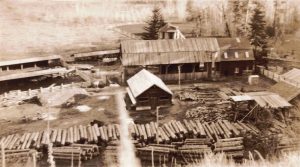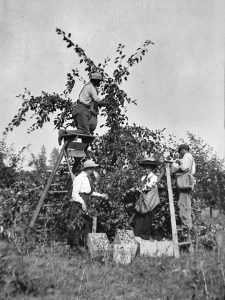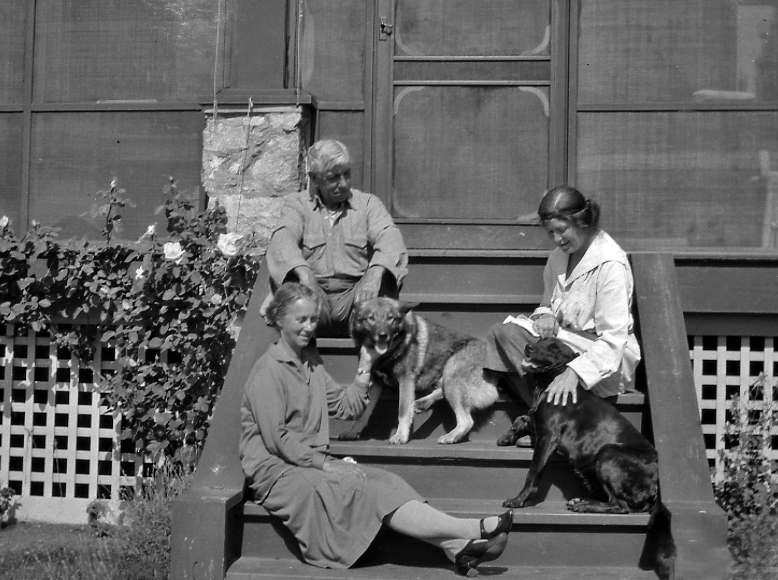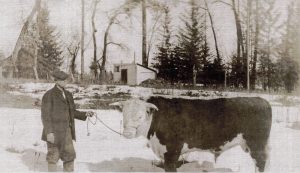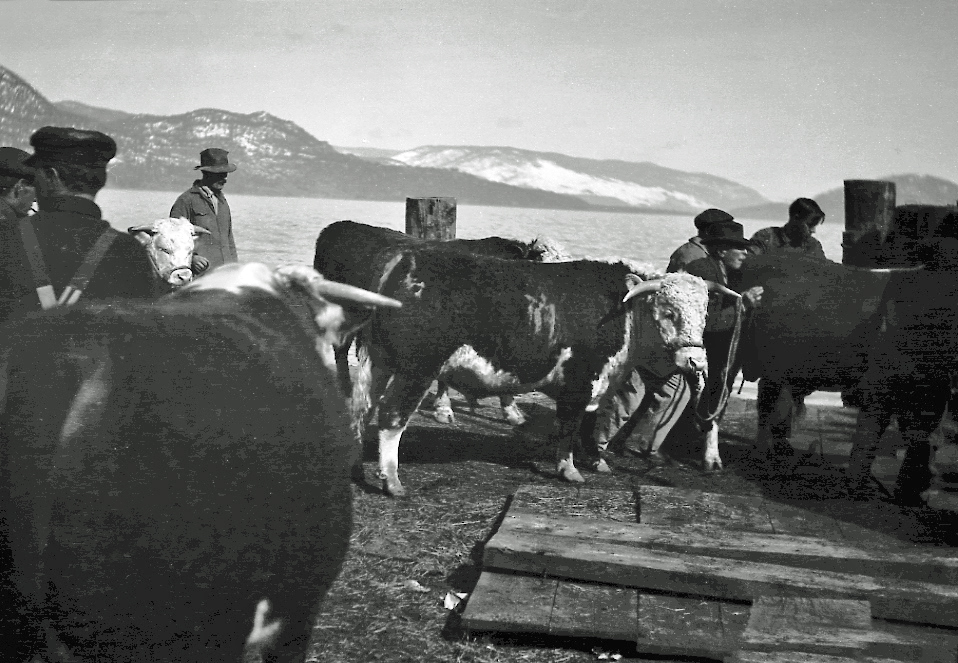Early Days
The early days at Fintry were a busy time for James and Alice. Getting to know neighbours and the area, they also oversaw the building of house and planting of gardens and planned the layout of the farming operation. This was seen from the onset to be more than a one-man operation, and Dun-Waters made an offer of a working partnership with his cousin, James Godwin.
The newly-established Fintry Estate was in many ways a typical British mixed farm: livestock, fruit and vegetables – all in the care of employees living on the property. The sawmill to cut and plane lumber from nearby forests and an ingenious irrigation and power system ensured that the estate was self-sufficient. The Dun-Waterses planted orchards and built a fruit packinghouse at the lake, and built a large barn complex for livestock.
In 1914, Dun‑Waters expanded the estate and purchased land higher up Shorts Creek for hay production and raising beef cattle. He named the ranch “Fintry High Farm.” The First World War delayed Dun-Waters’s plans to build High Farm, and the site remained undeveloped for nearly eight years. Dun‑Waters enlisted, although he was 50 years old, and served the next four years in England and Gallipoli, where he was wounded. He was discharged with the rank of Captain. He decided to serve the war effort in another way and, with his wife Alice and her companion Catherine ”Katie” Stuart, established a field hospital in Alexandria, Egypt. After the Armistice in 1919, Capt. Dun‑Waters and Alice, with Katie Stuart and her brother Geordie, returned to Fintry.
Geordie became the estate’s accountant and ranch operations continued to be managed by James Godwin. Dun‑Waters’s relations with his cousin James became strained, in part due to Godwin’s management style towards the Japanese workers. Dun‑Waters fired his cousin with a generous severance and enlisted brothers Guy and Ronald Pym as ranch managers.
Ranch and farming operations were expanded. In 1922, men were hired to clear the land and High Farm became home to a herd of 300 Hereford beef cattle. Herefords had become the best-known and reliable beef breed in Western Canada. The management of the herd followed the pattern established in the United States and Mexico in the 19th Century. The cattle were out on open range-land for most of the year and attended by a crew of mounted cowboys. Beef cattle in Scotland were a smaller breed, usually black in colour, and were tended by herdsmen on foot. The drove roads of Scotland, the routes that the herds took to the markets in the south would have been familiar to James Dun‑Waters. The Herefords and the Canadian ways of ranching them were a new experience for him.


